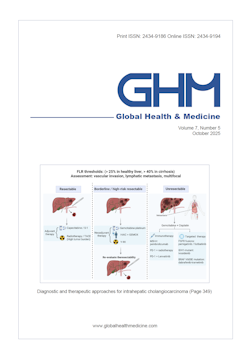Global Health & Medicine 2021;3(6):386-393.
The primary tumor location in colorectal cancer: A focused review on its impact on surgical management
Nagai Y, Kiyomatsu T, Gohda Y, Otani K, Deguchi K, Yamada K
The primary tumor location (PTL) has attracted increasing attention in recent years for colorectal cancer (CRC) patients. Although the underlying mechanisms for differences caused by PTL remain still unclear, right-sided colon (RCC) and left-sided colon (LCC) are now considered as distinct entities because of their different molecular profile and clinical response to surgery and chemotherapy. In this article, we review the influence of PTL particularly on surgical management of primary and metastatic CRC settings. For nonmetastatic CRC, RCC could be a slightly superior prognostic factor after curative resection in stage I-II CRC, while RCC could be an inferior prognostic factor in stage III CRC with worse survival after recurrence, suggesting the oncological aggressiveness of recurrent RCC. For metastatic CRC, RCC could be a predictor of worse survival after hepatectomy of liver metastases from CRC with aggressive recurrence pattern and lower chance of re-resection. In lung metastases from CRC, the role of PTL still remains uncertain because of the limited number of studies. As to the impact of PTL on survival outcome after cytoreductive surgery plus hyperthermic intraperitoneal chemotherapy for peritoneal metastases from CRC, a discrepancy exists among studies and further investigation will be needed. The very simple clinical factor of PTL could provide important information for the prediction of the survival outcome after surgery in CRC. Further clinical and basic research will facilitate the clinical application of PTL in a more specified and personalized manner.
DOI: 10.35772/ghm.2020.01096







